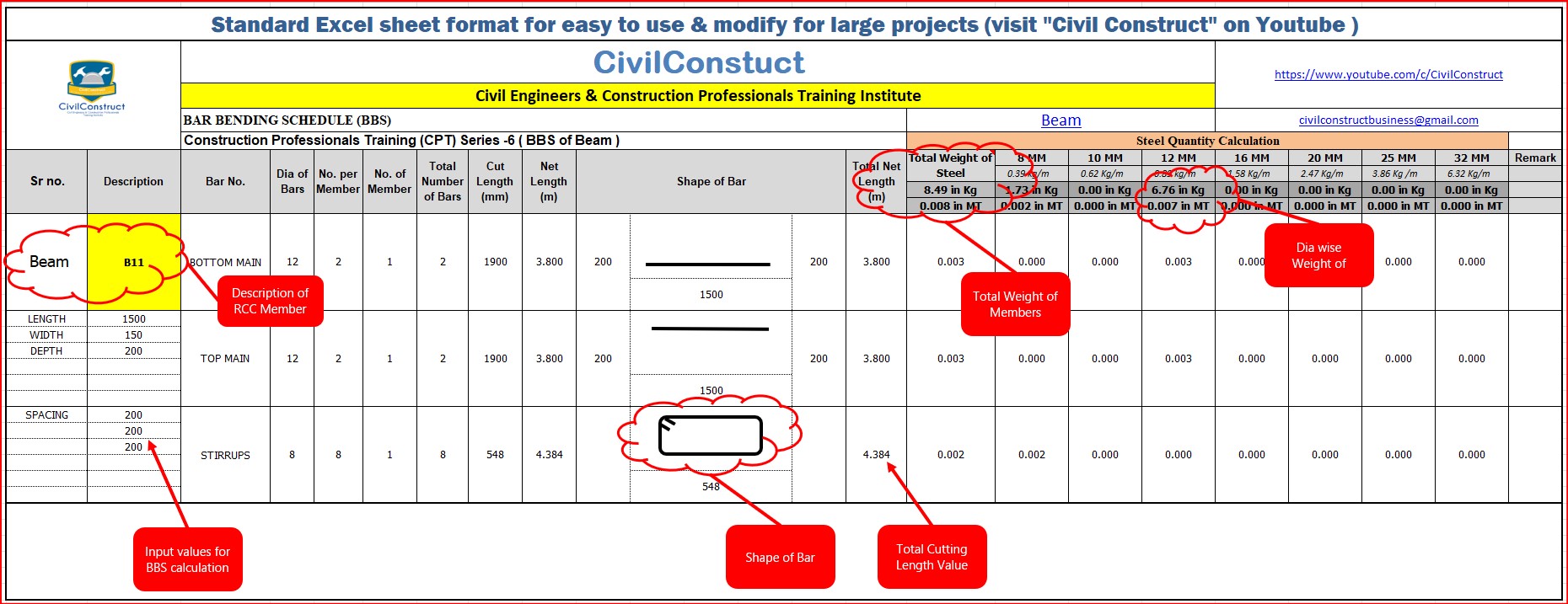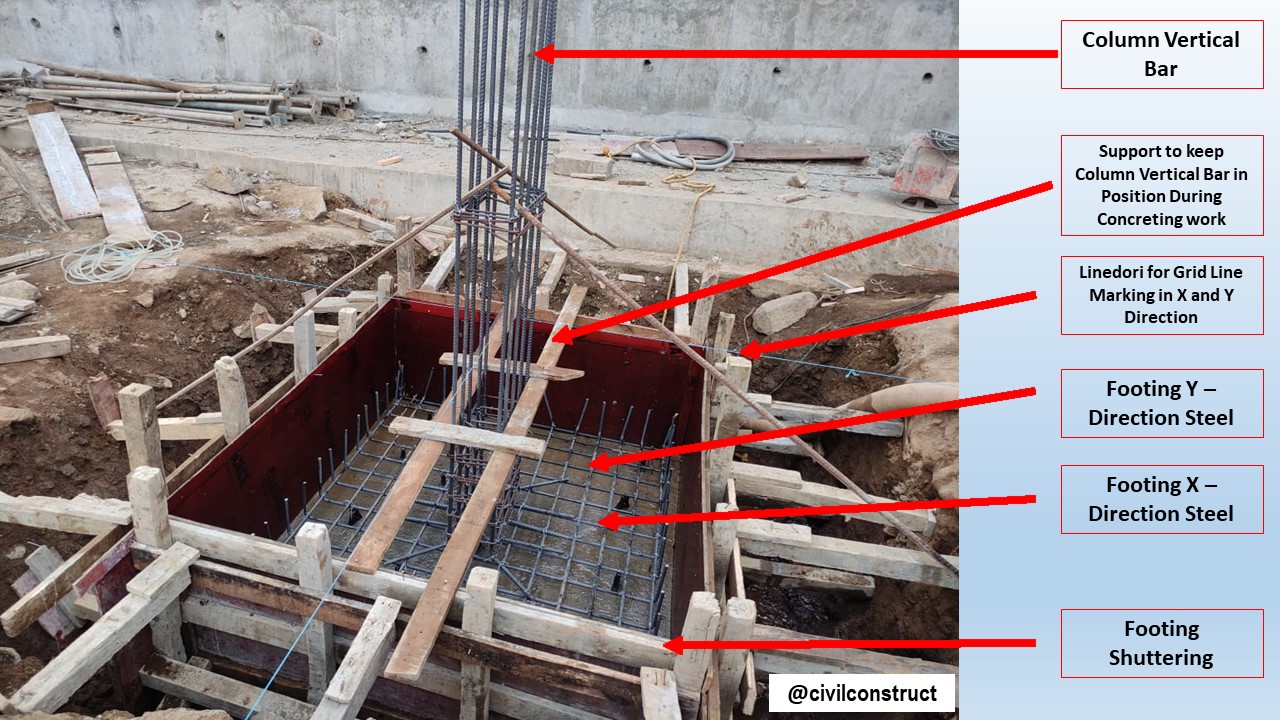What is Bar Bending Schedule (BBS)?
- A Bar Bending Schedule, commonly known as BBS, is a document that provides detailed information about the shape, size, length, and quantity of reinforcement bars required in a reinforced concrete structure. It acts as a bridge between the design drawings prepared by structural engineers and the actual implementation at the construction site.
- A bar bending schedule (BBS) is a tabular breakdown of reinforcing bars that includes details such as bar type, total length, weight, and a drawing of the desired bending shape.
- BBS are used in civil engineering to ensure that the correct quantity and type of reinforcing bars are used in a structure. They are also used to estimate the cost of reinforcing steel for a project.

Importance of Bar Bending Schedule (BBS)
BBS serves as a vital communication tool between different stakeholders involved in the construction process. Its significance lies in the following aspects:
- Material Ordering and Procurement: BBS helps contractors and suppliers accurately estimate the amount of steel required, minimizing wastage and ensuring cost-effectiveness.
- Efficient Construction: With a well-prepared BBS, construction workers can readily identify and utilize the correct reinforcement, leading to a smoother construction process with reduced errors and minimizes wastage of steel on site
- Compliance with Design Specifications: BBS ensures that the reinforcement arrangement adheres to the design drawings, maintaining structural integrity and safety.
- Quality Control: BBS enables site engineers to monitor and verify that the correct reinforcement is being used at each stage of construction, ensuring high-quality workmanship.
Components of Bar Bending Schedule
A standard BBS typically comprises the following components:
- Bar Mark: A unique identifier assigned to each reinforcement bar, corresponding to the notation on the structural drawings.
- Bar Description: Includes the diameter, grade, and type of reinforcement bar (e.g., D10, D16, Fe415, etc.).
- Length: The required length of each bar, calculated based on the structural design.
- Quantity: The number of bars required for each type and size of reinforcement.
- Shape Code: If applicable, a code indicating the specific bending or shaping requirements for the bar.
- Bending Details: Elaborates on the bending angles, bend lengths, and hook lengths for bars requiring shaping.

Process of Preparing Bar Bending Schedule:
- Understanding Structural Drawings: Site engineers must thoroughly analyze the design drawings to comprehend the structural requirements and reinforcement layout.
- Organizing Data: Use spreadsheet software like Excel to create a structured table to input the bar details and other relevant information.
- Data Entry: Enter the bar mark, description, length, and other data accurately in the spreadsheet.
- Calculation of Quantity: Utilize Excel formulas or manual counting techniques to determine the quantity of each type of reinforcement.
- Bending Details: For bars requiring bending or shaping, include the necessary information in the BBS.
- Review and Validation: Verify the accuracy of the BBS, cross-checking it with the structural drawings to identify any discrepancies or errors.
Benefits of an Accurate BBS
An accurately prepared BBS yields numerous benefits for site engineers and construction projects:
- Time Savings: With clear instructions in the BBS, construction teams can efficiently prepare and assemble reinforcement, saving time during execution.
- Cost Efficiency: Accurate quantity estimation ensures that only the required amount of reinforcement is purchased, reducing unnecessary costs.
- Improved Quality: BBS eliminates the chances of using incorrect reinforcement, enhancing the overall quality and longevity of the structure.
- Avoiding Rework: By adhering to the BBS, site engineers can minimize the need for rework and costly modifications
- Enhanced Safety: Properly detailed BBS contributes to a safer construction process and a structurally sound final product.
